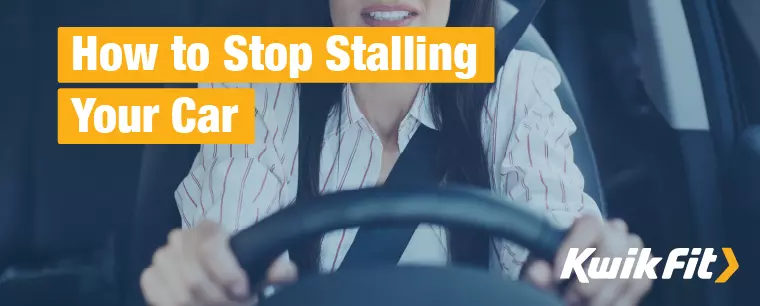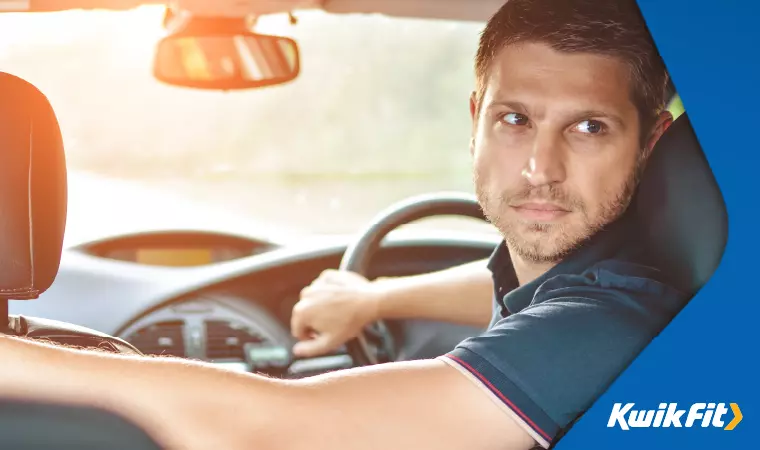How to Stop Stalling Your Car
Jack Dreyer | Monday 3rd April 2023 8:00am

When you’re new to driving, one of the most common obstacles you have to overcome is accurately working the clutch and accelerator pedal to be able to quickly go from stationary. The biting point for the clutch varies from car to car, so it takes a lot of experience to get familiar with finding the biting point, holding it, and balancing the pedals properly.
Here are some top tips.
Make sure there’s nothing wrong with the car
If you’re an experienced driver but your car keeps stalling, there could be an issue with the car itself! The main reasons for stalling (without driver error) are loss of power in the drive chain, clutch play, or blockages in the fuel or exhaust lines.
Loss of power
This can happen for a few reasons; most commonly, loss of power can be due to a faulty alternator or a battery that needs replacing. But it can also be due to things like split gaskets on the engine itself if you’re finding that it feels like the engine is losing power.
Clutch wear & play
As clutches wear over time, they can get to a point where they don’t fully retract or clamp against the flywheel – which means that you’re either not able to change gears (so the engine can’t get the proper amount of traction) or the force from the engine doesn’t get fully transmitted to the wheels.
Blockages in fuel or exhaust lines
It’s more common to get blockages in the exhaust system as soot builds over time, but you can also get blockages of various sorts in the fuel line – either through water finding its way into the tank or other debris getting sucked into the fuel line. Without the engine being able to draw fuel in or get rid of exhaust fumes out of itself, the rotational motion can’t continue and it stalls.
If you suspect that there’s anything mechanically wrong with your car, book for an appointment at your local Kwik Fit for a free assessment. Otherwise, read on.
Get familiar with the feel of the pedals

If you’re wondering “why do I keep stalling my car?”, the most important step is to get familiar with how the pedals in your car feel. Some clutch pedals, for example, have a lot more resistance and tension than others. Ones without much tension can therefore feel too loose – making it harder to hold the clutch at a certain place and find the biting point.
A useful practice exercise is to have your car parked on a level road (preferably away from other cars). With the car turned on and the handbrake engaged, put the car into first gear and then very slowly release the clutch pedal.
Without putting your foot on the accelerator, keep slowly releasing the clutch pedal until you feel the car begin to pull forward. Your handbrake will stop the car actually going forward, but you should be able to feel a slight pull on the whole car.
At this point, the clutch is engaged enough that the engine is providing a little bit of forward force – but, without any additional fuel, the weight of the car will usually be too much for the engine to pull from stationary.
The point at which the clutch is engaged enough to pull is the “biting point”. Get familiar with where this is in your car and practise quickly releasing the clutch to that point and holding it. The faster you can get to the biting point and hold it without stalling the car, the better you’ll be able to control stopping and going at junctions – as well as other manoeuvres.
Be mindful of how the biting point changes
The biting point of the clutch alone changes with age as the parts wear – but it also changes slightly with how much fuel you’re adding with the accelerator pedal.
This is an important balancing act. You need to be near the clutch’s biting point and adding just enough fuel to stop the car from stalling. If you add too much fuel then it won’t actually make the car go faster but could result in your car stalling while lurching forward – which can be very dangerous on junctions and roundabouts!
Practise in a safe area

If you want to become a clutch expert, it’s worth spending time practising in an empty car park. Give yourself enough room in front and practise gently pulling away from stationary. Stop when you get a few metres forwards and pull away again.
The more you do this, the more familiar you’ll get with your car’s characteristics – and soon enough you’ll be able to jump straight to the biting point and pull away much faster.
Make sure you’re always in the right gear
It’s often good, when you become a more confident driver, to stay in higher gears so that you can improve your fuel economy. But it’s equally important to make sure that you’re in the right gear at all times. When coming up to junctions, it’s crucial to slow to a stop and change back to first gear at all times – so that you can assess oncoming traffic and be able to pull away properly.
If you move to too high a gear at too slow a speed, there’s a good chance that you could stall, but usually it’s the other way around that causes stalling. Accidentally moving into second gear at, say, 50mph causes your car to lurch forward – and can even damage parts!
Keep practising!
While it’s like riding a bike (in that you never really forget the basics), driving needs frequent practice in order to stay sharp. See our blog for other information on anything car related!
Any facts, figures and prices shown in our blog articles are correct at time of publication.
Featured Articles
Is it Illegal to Drive With One Headlight?
Saturday 19th July 2025
Wondering if it’s illegal to drive with one headlight? Learn about the safety risks and penalties of illegal blown bulbs and why you should fix them promptly.
Air Con in EVs & Hybrids: Experts Answer Your Questions
Monday 30th June 2025
Does air con drain EV batteries? Can you use the air con while charging an electric car? Find out the answers to these questions & more from Kwik Fit’s experts.
Why Is Your Car Making a Noise? Fixes & Tips
Friday 13th June 2025
When your car starts making unexpected noises, it can certainly be quite disconcerting; it may be nothing to worry about, but here’s what you need to know.









